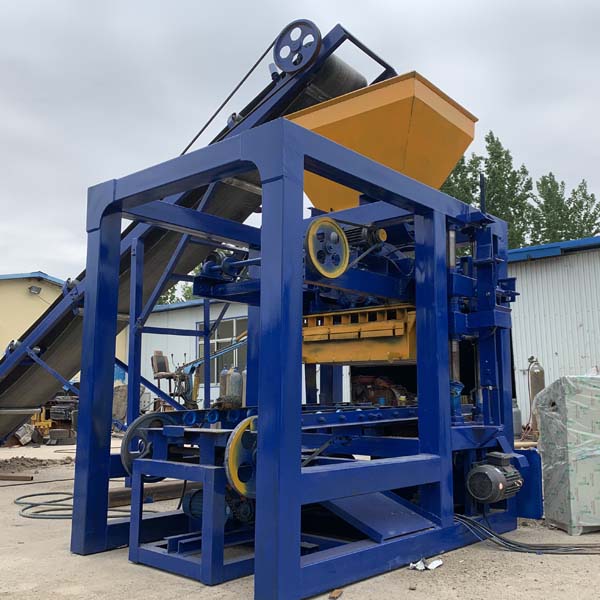
The construction industry is on the brink of a technological revolution that promises to reshape the way we build.
At the forefront of this transformation is the innovative brick making machine, a groundbreaking invention that is redefining traditional construction practices through automation.
This essay explores the profound impact of automated brick making machines on the construction industry, examining how they streamline processes, improve efficiency, and open doors to new possibilities in architectural design and urban development.
The Dawn of Automation in Construction
The integration of automation into various industries has long been a hallmark of progress, and the construction sector is no exception.
Historically characterized by labor-intensive processes, construction has lagged behind other sectors in adopting automation.
However, the introduction of innovative brick making machines is changing the landscape, ushering in a new era of automated building practices.
Automated brick making machines mark a departure from the manual labor-intensive methods of the past.
These machines incorporate advanced robotics, artificial intelligence, and precision engineering to automate various stages of brick production, from raw material processing to the final product.
This shift towards automation holds the potential to revolutionize construction practices, making them faster, more efficient, and ultimately more cost-effective.
Streamlining Construction Processes Through Automation
One of the most significant advantages of automated brick making machines is their ability to streamline construction processes.
These machines optimize each stage of brick production, reducing the need for manual intervention and minimizing the potential for human error.
As a result, tasks that previously required extensive labor and time are now accomplished seamlessly and with unparalleled accuracy.
Material Processing and Mixing: Automated brick making machines employ sophisticated systems to accurately measure and mix raw materials, ensuring consistent quality in every brick.
This precision minimizes material waste and enhances the structural integrity of the final product.
Molding and Pressing: Traditional brick molding often involves labor-intensive manual processes that can be time-consuming and prone to inconsistencies.
Automated machines use mechanized molding and pressing techniques that guarantee uniformity and precision, resulting in bricks of superior quality.
Curing and Drying: Automation extends to the curing and drying stages, where innovative technologies are employed to expedite the process without compromising the integrity of the bricks.
This rapid curing enhances productivity and reduces project timelines.
Enhanced Efficiency and Cost Savings
The automation of brick making processes translates directly into enhanced efficiency and cost savings for construction projects.
By minimizing the reliance on manual labor and accelerating production rates, automated machines enable builders to complete projects in significantly shorter timeframes.
This efficiency has a cascading effect, reducing labor costs, project overhead, and associated expenses.
Furthermore, the precision and uniformity achieved through automation contribute to improved construction quality.
Uniform bricks fit together seamlessly, resulting in stronger structures and reducing the need for excessive rework.
This not only enhances the durability of buildings but also reduces maintenance and repair costs over the long term.
Unlocking Architectural Possibilities
Automated brick making machines not only improve construction efficiency but also offer unprecedented architectural flexibility.
These machines are capable of producing bricks in a wide variety of shapes, sizes, and textures, enabling architects to explore innovative and intricate designs that were previously difficult to achieve using traditional methods.
This newfound architectural freedom is particularly relevant in contemporary urban development, where unique and visually striking structures are in high demand.
Automated brick making machines empower architects to push the boundaries of creativity, resulting in buildings that are not only functional but also visually captivating.
Overcoming Challenges and Embracing the Future
While the advent of automated brick making machines holds immense promise, it is not without challenges.
The initial investment required to acquire and implement these machines, as well as the need for specialized training to operate and maintain them, can pose barriers to widespread adoption.
Additionally, standardized regulations and guidelines must be established to ensure safe and responsible use of this transformative technology.
Collaboration between manufacturers, construction companies, and regulatory bodies is essential to address these challenges and facilitate the integration of automated brick making machines into mainstream construction practices.
As these obstacles are overcome, the construction industry stands to reap the rewards of increased efficiency, reduced costs, and enhanced architectural innovation.
In conclusion, the innovative brick making machine is heralding a new era of automation in the construction industry.
By automating various stages of brick production, these machines streamline processes, boost efficiency, and enable architects to explore novel design possibilities.
The transition to automation not only accelerates construction timelines and reduces costs but also elevates the quality and aesthetics of built structures.
As the construction sector embraces the future of automated building, it paves the way for a more efficient, sustainable, and architecturally diverse landscape.
